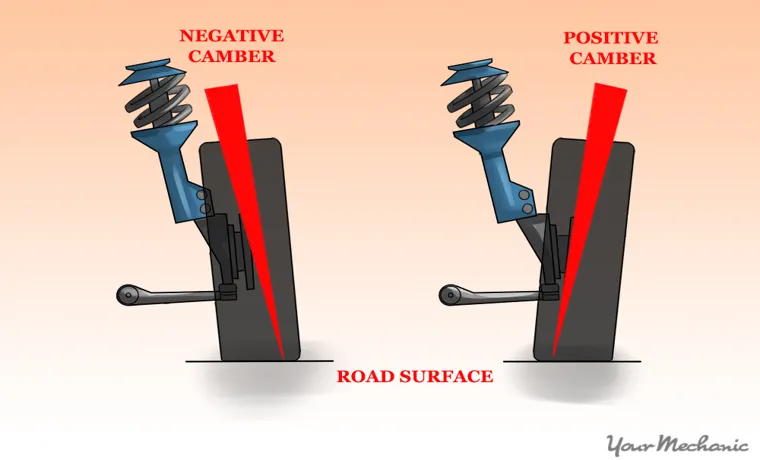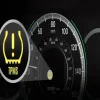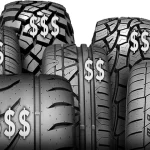Do you have a bike that has been leaning inwards? It could be your rear tire causing the problem. Riding with a tire that leans inwards can be both frustrating and dangerous, affecting your overall performance and balance. So, why is your rear tire leaning inward? There are many possible reasons this could be happening, and we’ll go over a few of them in this post.
It’s essential to understand the cause to find the right solution and ensure your safety on the road. From worn-out bearings to damaged rims, we’ll explore what might be causing your rear tire to lean inward and how to fix it. So, let’s dive in and keep your bike in top shape!
Table of Contents
Possible Causes
If you notice that your rear tire is leaning inward, there could be several possible causes. One possibility is that your wheel is simply misaligned. This could happen if it was not properly installed or if it was not tightened properly.
Another possibility is that your tire has lost air pressure. This can cause the tire to lean inward and affect the alignment of your bike. Additionally, worn bearings or a bent frame could also be a cause of this issue.
It’s important to identify the source of the problem so that you can fix it and ensure your safety while riding. Check your tire pressure regularly and have your bike inspected by a professional if you suspect there is an issue with alignment or your bike frame.
Worn Suspension Components
If you notice that your vehicle is bouncing or making strange noises while driving, worn suspension components may be the culprit. One cause of worn components is age and regular wear and tear. Over time, the rubber in shock absorbers and other suspension parts can deteriorate, leading to decreased performance and a rougher ride.
Another possible cause is driving conditions, such as rough or uneven roads, which can accelerate wear and tear on these components. Additionally, aggressive driving, such as taking corners too quickly or hitting speed bumps too hard, can also put extra strain on the suspension system. Regular maintenance can help prevent worn suspension components, but if you suspect your suspension is in need of repair, it is best to have it checked out by a professional mechanic.
Ignoring the issue can lead to further damage and even safety hazards.

Incorrect Tire Pressure
Incorrect Tire Pressure is a common issue faced by many drivers, and it can lead to serious consequences. One of the possible causes of incorrect tire pressure is extreme weather conditions, such as extreme heat or cold. When exposed to high temperatures, the air inside the tire expands, causing the tire pressure to increase.
Similarly, in cold weather, the air inside the tire contracts, causing the tire pressure to drop. Another possible cause is a faulty tire pressure monitoring system, which can fail to detect the actual pressure in the tire and provide incorrect readings. Additionally, overloading a vehicle can put additional stress on the tires, leading to improper pressure.
It’s important to regularly check your tires’ pressure with a tire gauge to prevent any potential risks associated with incorrect tire pressure. Remember, driving on improperly inflated tires can cause poor fuel efficiency, uneven tire wear, and even accidents on the road.
Misaligned Wheels
If your car seems to be pulling to one side or vibrating while driving, it could be a sign of misaligned wheels. There are several possible causes of misaligned wheels, including hitting a curb or pothole, worn suspension components, and even everyday wear and tear. If you notice any of these symptoms, it’s important to have your wheels checked by a professional mechanic as soon as possible.
Ignoring misaligned wheels can lead to more serious problems down the road, including reduced fuel efficiency, uneven tire wear, and even unsafe driving conditions. Don’t let your car’s alignment issues go unchecked – bring it into your local mechanic for a proper inspection and adjustment.
How to Check and Fix Leaning Tires
Are you wondering why your rear tire is leaning inward? There can be several reasons why this is happening. The most common cause of a leaning tire is due to improper alignment. If your vehicle’s suspension system is not properly aligned, it can result in one or both of your tires leaning inward or outward.
Another reason could be if your wheels are not balanced correctly, it can cause your tires to lean. Additionally, worn out or damaged ball joints or control arm bushings can also cause your tire to lean inward. It’s essential to address this as soon as possible as leaning tires can result in uneven tire wear, poor handling, and reduced vehicle stability.
To fix this, take your vehicle to a trusted mechanic to diagnose and fix the underlying issue.
Check Tire Pressure and Wear
Checking the tire pressure and wear on your vehicle is an essential task that should be carried out regularly to ensure that your car stays safe on the road. One common issue many drivers face is uneven wear or leaning tires, which can be caused by a variety of factors such as misaligned wheels, inappropriate tire size, or suspension problems. To check for leaning tires, start by examining the wear pattern on each tire.
If one tire is significantly more worn than the others or has worn down faster on one side, then there’s a good chance it’s leaning. It’s also important to check the tire pressure regularly with a pressure gauge and ensure it matches the recommended pressure levels as specified in the owner’s manual or on the tire sidewall. If you suspect your tires are leaning, take your vehicle to a professional mechanic to get it checked, and don’t hesitate to get new tires if necessary.
Remember, driving on leaning tires can be hazardous and could result in serious accidents, so it’s always better to err on the side of caution and prioritize your safety on the road.
Inspect Suspension Components
If you notice your car leaning to one side, it’s important to check your suspension components to fix the issue. Start by checking the air pressure in your tires. If one tire has lower pressure than the others, it could cause the car to lean.
Make sure each tire has the proper air pressure as specified in your owner’s manual. Next, check the suspension components. Look for any signs of damage, such as cracks, leaks, or bent parts.
If any components are damaged, they will need to be replaced. Finally, it’s a good idea to take your car to a professional mechanic for a full suspension inspection. They can check for any other issues and ensure your suspension is functioning properly.
Remember that a properly functioning suspension system not only ensures a smooth ride but it also plays an important role in keeping you safe on the road. So, don’t ignore any signs of car leaning and make sure to check and fix any issues with your suspension components.
Wheel Alignment Check
Wheel Alignment Check Have you noticed that your car is pulling to one side while you’re driving? Or that your tires are wearing unevenly? A possible reason for this could be leaning tires caused by improper wheel alignment. To check your car’s wheel alignment, start by finding a level surface where you can park your vehicle. Then, inspect your tires for any signs of wear or damage.
Next, use a ruler or tape measure to measure the distance between your rear wheels and front wheels on both sides. If these measurements aren’t equal, it’s a sign that your car’s wheel alignment is off. Luckily, fixing this issue is relatively simple and can be done at most garages or tire shops.
A professional mechanic will use specialized tools to adjust the camber, caster, and toe angles of your wheels to ensure they are perpendicular to the ground and parallel to each other. This will help prolong the lifespan of your tires, increase fuel efficiency, and provide better handling and stability. So, if you suspect your tires may be leaning due to poor wheel alignment, it’s crucial to have them checked as soon as possible to avoid bigger issues down the road.
Conclusion and Preventative Maintenance Tips
After careful consideration, it seems that your rear tire may not be leaning inward at all. It could just be an optical illusion caused by the curvature of the road or the angle at which you are viewing your bike. However, if it truly is leaning inward, it could be due to a misaligned rear axle or an issue with the tire itself.
Regardless of the cause, it’s always wise to get your bike checked by a professional mechanic to ensure a smooth and safe ride. Remember, a little bit of preventative maintenance goes a long way in keeping your ride on the straight and narrow. Happy cycling!”
FAQs
What could be causing my rear tire to lean inward?
A common cause of rear tire leaning inward is a worn or damaged wheel bearing.
Will a misaligned rear tire cause it to lean inward?
Yes, a misaligned tire can cause it to lean inward and can also cause uneven tire wear.
How can I tell if my rear wheel is misaligned?
Look for uneven tire wear, vibrating or shaking while driving, and difficulty steering straight.
Can overloading my vehicle cause the rear tire to lean inward?
Yes, overloading can put extra stress on the suspension system and cause the rear tire to lean inward.
Is it safe to drive with a rear tire that is leaning inward?
No, it is not safe to drive with a misaligned or leaning tire as it can affect the handling and stability of the vehicle.
How much does it cost to fix a rear tire that is leaning inward?
The cost to fix a misaligned tire can vary depending on the cause, but it typically ranges from $50 to $200.
Can I align the rear tire myself?
It is not recommended to align the rear tire yourself as it requires specialized equipment and knowledge. It is best to take it to a professional mechanic.



